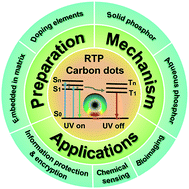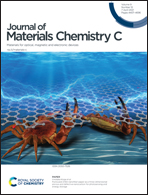Recent advances in room temperature phosphorescent carbon dots: preparation, mechanism, and applications
Abstract
As an important photoluminescence (PL) phenomenon, room temperature phosphorescence (RTP) has received widespread interest since it has the benefit of longer luminescence lifetime, larger Stokes shift, and higher environmental sensitivity. Traditional RTP materials include organometallic complexes and pure organic compounds, which possess complex fabrication, expensive cost, or high cytotoxicity. Carbon dots (CDs), as the new type of luminescent materials, have drawn sustained attention due to their fine biocompatibility, environmental friendliness, low cost, and convenient preparation method. In past few years, some important progresses have been made in RTP CDs and a summary is urgently needed in this field. This review outlines the recent development of RTP CDs, including their synthetic methods, luminescence mechanism, structure, and properties. Moreover, various applications in anti-fake, information security, sensing, bio-imaging, and others have been introduced systematically. Finally, challenges, opportunities, and the future trend of these emerging carbon-based phosphorescent materials are presented for further study.

- This article is part of the themed collections: Journal of Materials Chemistry C Recent Review Articles and Journal of Materials Chemistry C Lunar New Year collection 2022


 Please wait while we load your content...
Please wait while we load your content...